Introduction
Robotic Process Automation (RPA) offers businesses the transformative power of automation and the ability to streamline processes. However, choosing the right RPA tool and understanding its fundamentals are crucial for successful implementation. In addition, learning RPA development basics and exploring advanced techniques can unlock the full potential of automation.
RPA implementation strategies and testing and deployment best practices are also essential for seamless integration. Furthermore, staying updated with RPA certifications and training programs is key to staying ahead in this rapidly evolving field. Finally, exploring future trends in RPA, such as the integration of AI and machine learning, can amplify the capabilities of RPA tools.
By delving into these topics, professionals can harness the power of RPA to drive operational excellence and efficiency in their organizations.
Choosing the Right RPA Tool
Selecting the ideal Robotic Process Automation (RPA) tool is a critical step in harnessing the transformative power of robotic processes. When evaluating RPA solutions, it’s vital to assess their usability, scalability, and ability to integrate with existing systems. Community support also plays a key role, offering insights and resources for smoother implementation. Tailoring your choice to your organization’s unique needs ensures that your RPA tool not only meets current objectives but also supports future growth. As automation continues to evolve, remember that it’s a partnership between technology and human oversight. Ensuring ongoing monitoring, management, and upgrades is essential for maintaining efficiency and productivity. With this collaborative approach, RPA can effectively handle routine tasks, freeing up human talent for more complex and creative work, ultimately leading to increased operational excellence.
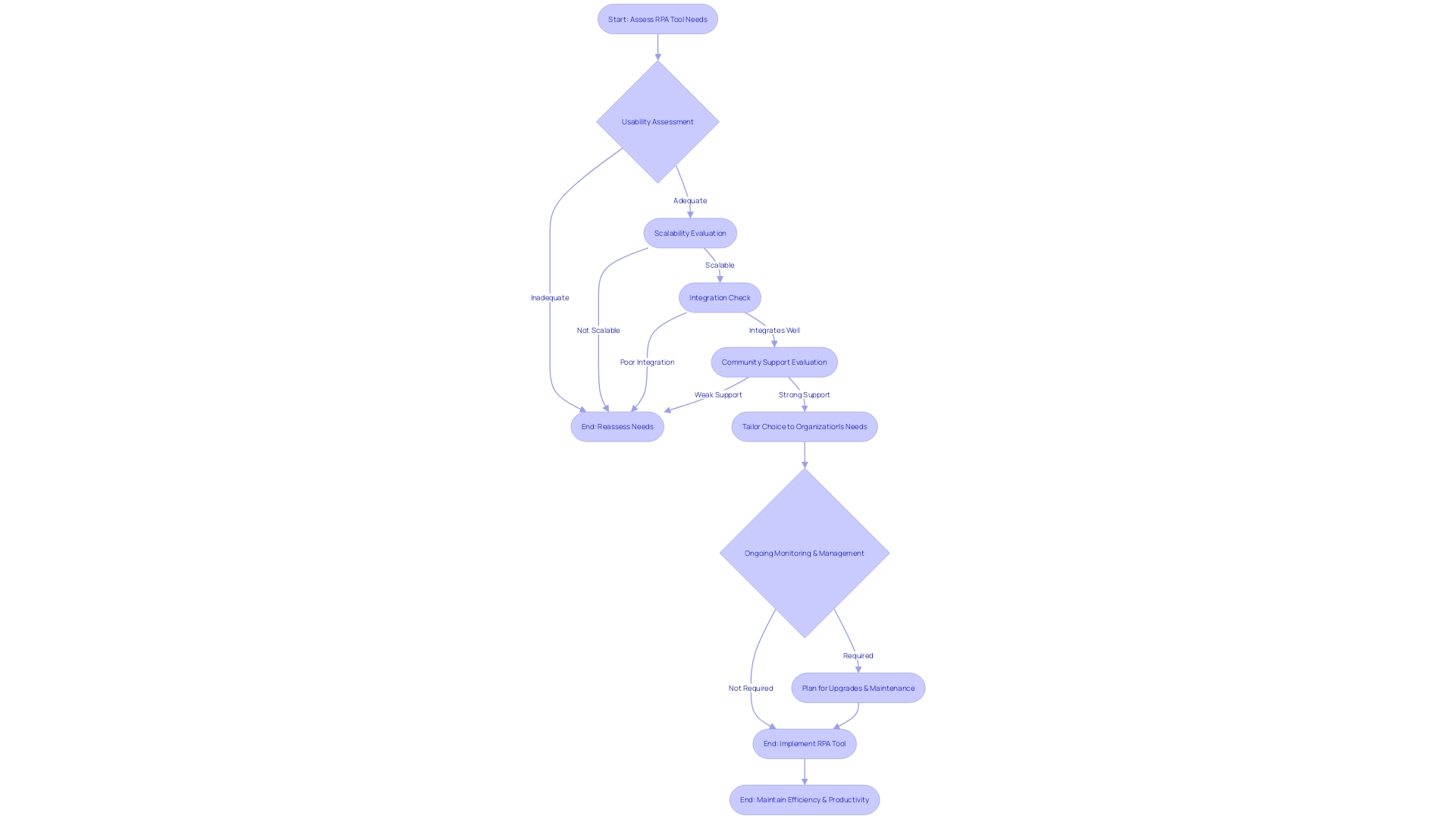
Understanding RPA Fundamentals
To effectively develop RPA solutions, a thorough comprehension of RPA fundamentals is essential. RPA, or Robotic Process Automation, represents a technological leap where software robots, known as ‘bots’, emulate human tasks in a digital environment. These bots are adept at conducting repetitive, rule-based activities such as data entry, data extraction, and document processing. Attended and unattended RPA are the two primary types, each with distinct operational frameworks and applications. Attended RPA works alongside human input, while unattended RPA operates independently.
The transformative power of RPA lies in its ability to connect disparate systems, automating workflows and tasks across various applications, thus liberating human workers from monotonous duties. As Bosch harnesses digital engineering to enhance green energy efficiency, it exemplifies the broader operational benefits of RPA. By incorporating RPA, organizations can achieve a more efficient, real-time understanding of processes, enabling improved, faster decision-making.
Data is the linchpin of RPA; sourcing from databases, transaction logs, social platforms, and customer insights. This data must be meticulously cleaned and formatted for analysis. With the right analysis tools, from statistical methods to data mining, RPA can unleash a new realm of efficiency and productivity. As corporations like Microsoft and Google invest in generative AI, RPA stands as a complementary tool that, while may require patience, promises to deliver substantial long-term benefits.
In summary, stepping into RPA development demands a strong grasp of its capabilities and mechanisms. This foundation is not just about understanding the bots but also about grasping the strategic vision of how RPA can transform business intelligence, much like it has begun to revolutionize aspects of green energy and operational visibility.
Learning RPA Development Basics
Embarking on the path to becoming proficient in RPA development requires an initial step of grasping the fundamental principles. One should begin by learning the common programming languages pivotal for RPA, such as Python and C#. Exploring the development environment of your chosen RPA tool is essential, along with becoming proficient in creating and setting up workflows. It’s important to also understand essential programming constructs like variables, loops, conditions, and how to manage exceptions.
Businesses across industries have recognized the undeniable benefits of RPA in streamlining processes. Take for example Enefit, a major energy company which, after conducting a survey, found that their employees spent an average of 18 minutes to locate answers within internal documents. This scenario underscores the necessity for automation in handling vast amounts of data and improving operational efficiency.
Furthermore, adopting RPA is not only about the use of tools but also about the importance it adds to human interactions within an organization. The tacit knowledge that employees share is invaluable, and RPA can help preserve and disseminate this knowledge more effectively. As highlighted by John Naughton in The Guardian, the secret to successful implementation lies in the collective know-how of the people involved.
The Global State of Business Analysis Report, which surveyed over 4,400 professionals, further illuminates the impact of such technologies. It shows how analysis is evolving and highlights the importance of adapting to new tools like RPA. This is echoed in the industry’s shift towards a more data-driven approach, as detailed in IIBA’s report on Achieving More with Data.
In essence, establishing a strong groundwork in RPA fundamentals is not only about technical skills, but also about comprehending how these skills can transform processes and enhance collaboration within an organization. As RPA continues to evolve, professionals who are well-versed in both the technological and human aspects of the field will be best positioned for success.
Advanced RPA Techniques
When diving into the deep end of Robotic Process Automation (RPA), it becomes crucial to leverage the full spectrum of its capabilities to stay at the forefront of technological innovation. Advanced RPA features such as image and text recognition, web scraping, and seamless integration with external systems and APIs are crucial in developing sophisticated solutions that can handle complex business logic, error handling, and exception management efficiently. Consider the scenario of Lindy’s AI assistant, which necessitated the integration of a vast network of apps and services to execute tasks adeptly across various domains such as medical scribing and customer support. This challenge was akin to orchestrating a symphony of AI-powered employees, requiring meticulous research and development to avoid prolonging their market entry.
In a landscape where open-source software has become integral to cutting-edge technology, employing robotic programming is tantamount to instructing a robot’s brain, which is connected to sensors and actuators, to perform complex tasks. This underscores the importance of continuous monitoring, management, and upgrades even in the era of AI, where the human partnership is indispensable for ensuring stability. At Coding Crafts, a pioneer in custom software development, this philosophy extends to integrating innovative services like Blockchain Development, adding layers of security and transparency to technology initiatives.
As we navigate this future with cutting-edge mechanization, it is clear from the insights of industry leaders that RPA and Intelligent Automation (IA) are rapidly transforming the technological landscape. The commitment to innovation is manifest in the adoption of AI across various industries, from customer service chatbots to predictive analytics in healthcare. Nevertheless, it is important to mention that only a portion of enterprises are utilizing Ai’s complete potential in goods production and service delivery. According to a study conducted by Statistics Canada, only 6.1% of enterprises utilized AI in the creation of products, emphasizing a notable chance for improvement and enhancement in effectiveness through advanced techniques of mechanization.
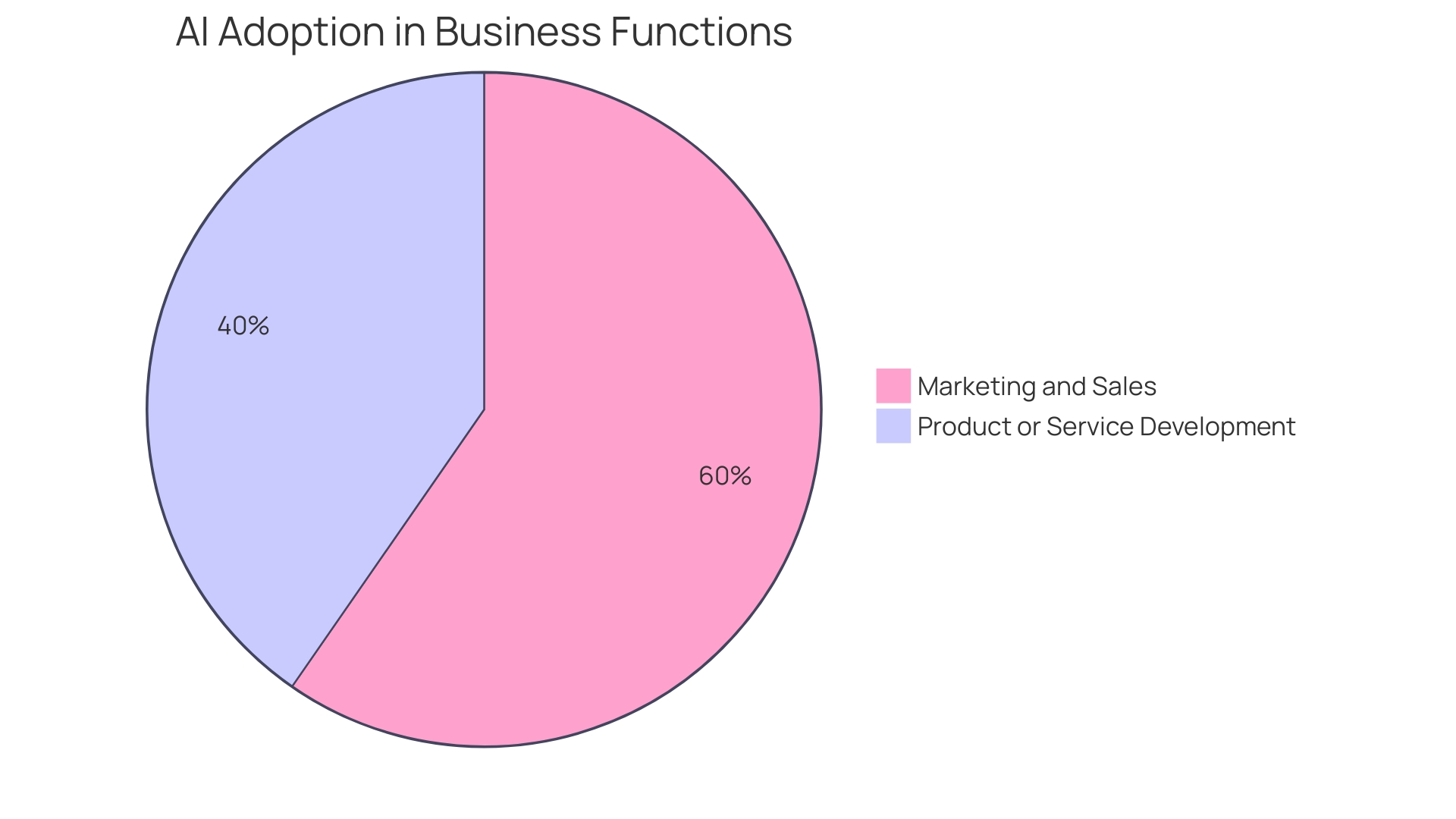
RPA Implementation Strategies
Embarking on the journey of Robotic Process Automation (RPA) involves more than just coding—it demands a comprehensive grasp of best practices and strategic implementation within an organization. Delving into the merits of both top-down and bottom-up methodologies, we uncover the inherent challenges and pivotal considerations of each. This exploration includes strategies to identify and prioritize processes ready for streamlining, creating a persuasive business case for RPA, and securing stakeholder endorsement.
An example of this is the NHS’s Digital Service Team, which meticulously assesses new digital adoption requests for security and compliance, avoiding redundancies by ensuring the requested solution isn’t already in use. Similarly, Medien Hub Bremen-Nordwest’s collaboration with Mediensystempartner (MSP) exemplifies the search for the ideal AI platform, culminating in the successful deployment of Parloa with SC Soft, which dramatically improved customer service efficiency.
Reflecting on the retail sector, the innovative Zippin-powered checkout-free store in Dublin Airport demonstrates the practical application of RPA in streamlining customer transactions. In the domain of global regulations, recent academic research highlights the need for human supervision in facial identification systems, emphasizing the significance of ethical deliberations in mechanization.
To ensure successful enterprise application testing, open-source tools offer valuable resources. Workflow streamlining stands as a testament to the power of technology in simplifying complex business processes, as evidenced by a Zapier report highlighting its widespread utility in small businesses.
According to industry experts, the process of using machines has always required human interaction for monitoring, management, and upgrades. This synergy between humans and AI is crucial for maintaining stability and achieving efficiency and productivity gains.
When identifying opportunities for streamlining processes, focus on manual, repetitive, and resource-intensive tasks. Start with small, targeted projects and evaluate their complexity and potential return on investment (ROI). Common starting points include automating identity verification and simple order inquiries, as these often present quick wins with low complexity.

Testing and Deployment
Robotic Process Automation (RPA) has transformed the way enterprises engage with data and processes, providing a mechanism to automate routine tasks and improve operational efficiency. It’s essential to recognize that the journey of RPA deployment doesn’t end with development; rigorous testing and strategic deployment are pivotal for its success. RPA testing follows a structured path, starting with unit testing, where individual components of the process are tested for functionality. Integration testing follows, ensuring that various components work together seamlessly. The last step is user acceptance testing, where end-users verify that the system aligns with business requirements and performs as expected.
To exemplify, consider the case of Enefit, a leading energy company in the Baltics. They faced a significant challenge with their vast repository of internal documents. Employees spent, on average, 18 minutes to locate answers within these documents, with 10% taking over an hour. Implementing RPA in such scenarios not only streamlines information retrieval but also necessitates meticulous testing to ensure such solutions function accurately and efficiently.
When deploying RPA solutions, best practices include maintaining version control to manage different iterations of the automation, change management to ensure smooth transitions, and thorough documentation for clarity and future reference. As noted by Dr. Evan Shellshear, an AI expert, the integration of RPA within existing systems can present complexities, especially with legacy systems. Hence, it’s crucial that the deployment process is managed with a keen eye on how these automated solutions coexist with and enhance current infrastructures.
With RPA becoming increasingly prevalent in various sectors, including security and defense, the call for responsible and controlled use of autonomous systems becomes louder. As we observe global conversations regarding the ethical and legal consequences of AI, such as the promotion of a binding instrument on autonomous weapons systems, it serves as a reminder of the profound influence that advanced tools have on our lives and the significance of implementing them responsibly. For RPA solutions, this translates to ensuring that they are not only efficient but also aligned with ethical standards and contribute positively to operational workflows.
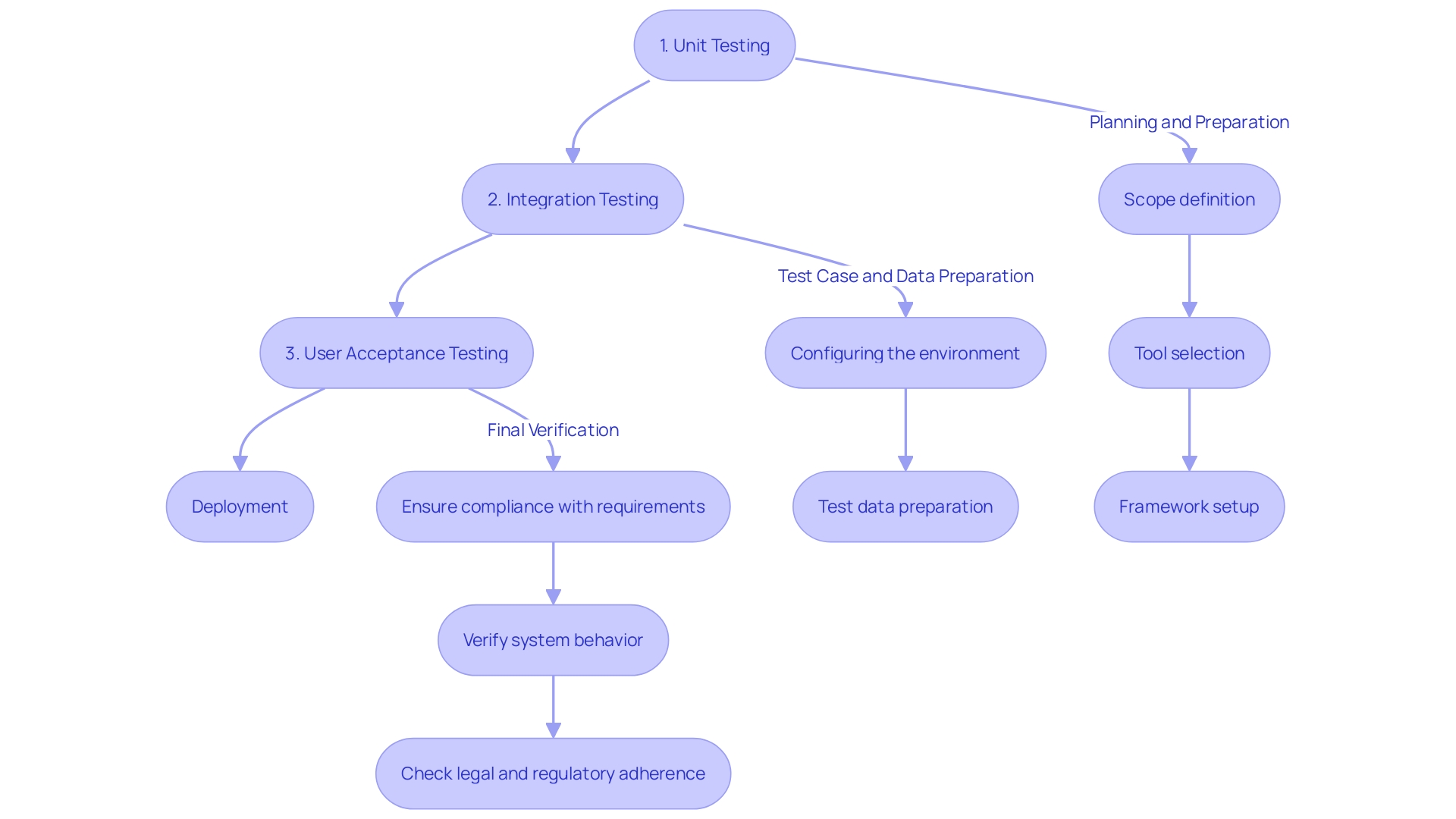
RPA Certifications and Training
Staying abreast of the latest advancements in RPA is pivotal for professionals seeking to solidify their position in the industry. Certifications and training programs serve as a testament to one’s dedication and proficiency in this rapidly evolving domain. Selecting programs recognized by esteemed organizations ensures that the knowledge gained is both relevant and respected. Such credentials not only reflect an individual’s command over RPA tools and technologies but also their ability to adapt to emerging trends and methodologies. With industries progressively shifting towards mechanization for operational effectiveness, a qualified expert stands at the forefront, prepared to execute creative resolutions and propel enterprise knowledge to new levels.
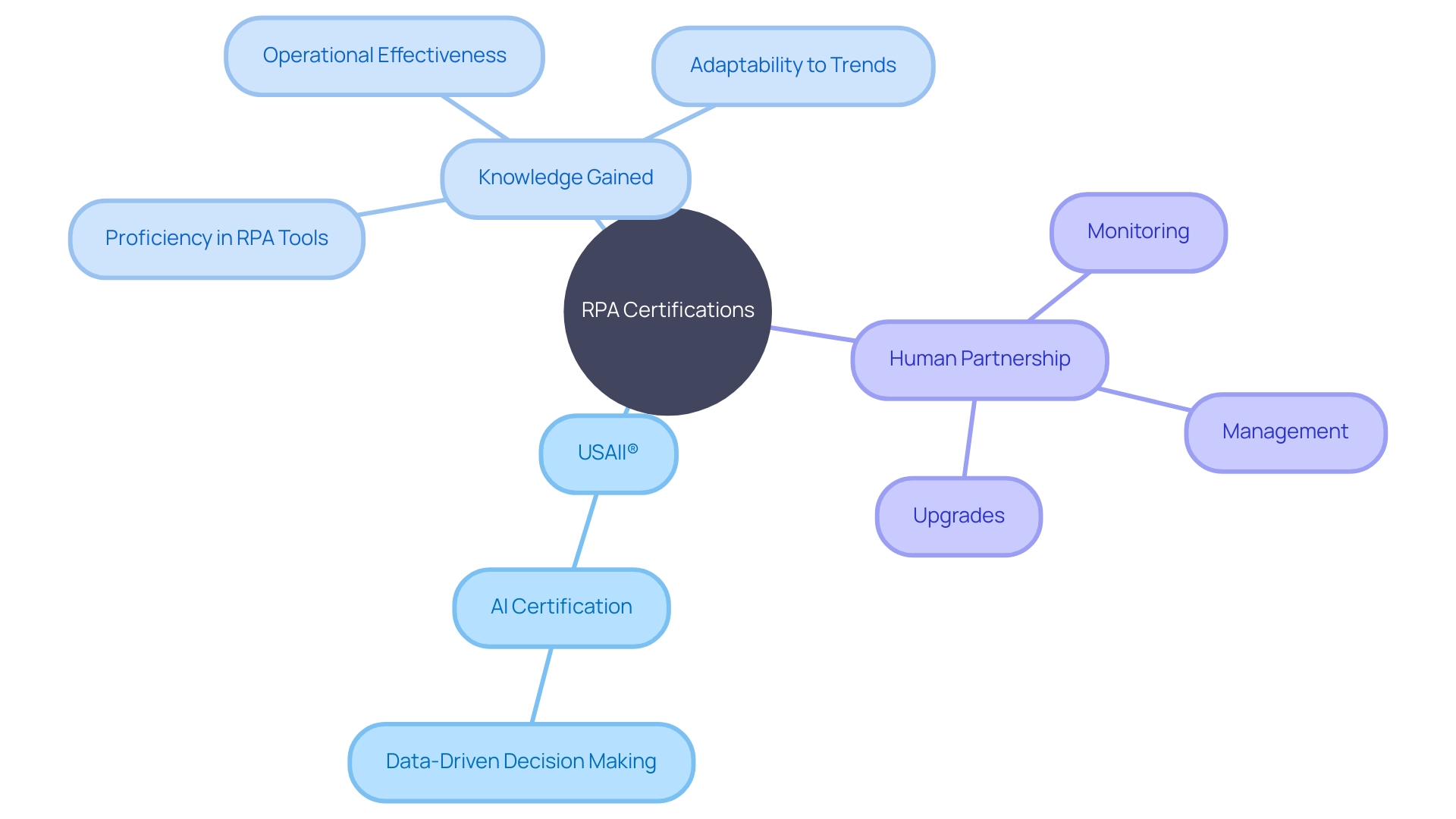
Best Practices for RPA Development
Robotic Process Automation (RPA) signifies a substantial leap forward in business process optimization, echoing the long history of mechanization in driving efficiency and productivity. As developers, embracing RPA requires a deep understanding of its nuances to construct solutions that are not only efficient but also robust and adaptable. To succeed in RPA development, it’s crucial to embrace coding standards customized for RPA, promoting uniformity and excellence in your scripts.
Emphasizing a modular design enables the creation of reusable components, leading to more streamlined and maintainable workflows. Moreover, this approach is instrumental in addressing complex tasks by breaking them down into manageable segments. It mirrors the findings at Benefit, a leading energy company, where the vast array of internal documents made information retrieval time-consuming. Just as modular document management could streamline their processes, so can modular RPA design enhance operational efficiency.
Integration of error handling and comprehensive logging is not just a best practice; it’s essential for pinpointing issues swiftly, thereby reducing downtime. These mechanisms are crucial in situations like within the NHS, where the implementation of digital solutions must be secure, compliant, and efficient. A robust RPA framework ensures that any issues can be quickly identified and rectified, maintaining the integrity and continuity of critical healthcare operations.
The importance of version control cannot be overstated in managing the evolution of RPA scripts. It’s a tool that safeguards against errors and facilitates collaboration, ensuring a stable and progressive development environment. As the CTO and Co-Founder of Reveille Software points out, the journey of automation has always required monitoring, management, and upgrades. RPA development is no different in this regard; it’s an ongoing process of refinement and enhancement.
By incorporating these best practices into your RPA development routine, you not only enhance the quality of your solutions but also position yourself at the forefront of this transformative field. The result is a powerful alignment of human ingenuity and digital precision that propels businesses toward the future of operational excellence.
Future Trends in RPA
To thrive in the ever-changing realm of RPA, one must explore the interplay between RPA and state-of-the-art advancements such as AI and machine learning. These advancements can significantly amplify the capabilities of RPA tools. For instance, incorporating natural language processing enables chatbots to deliver precise and contextual responses, enhancing user interactions. Similarly, AI algorithms can be utilized to craft personalized recommendations by analyzing user data, which becomes more accurate as the machine learning model learns over time.
Integrating such advancements can simplify intricate tasks, as observed in the healthcare industry where digital service teams evaluate if new innovations align with compliance and already established solutions. This proactive approach is crucial in ensuring the secure and proper use of the tools. Moreover, AI-driven solutions, such as AI chatbots, are instrumental in addressing staff shortages and improving patient care by providing continuous communication channels.
These advancements are not without challenges, as highlighted by the ongoing debates around ethics and regulations in AI, particularly in the context of autonomous weapons systems. The consensus among experts suggests that human oversight is imperative in an area where life and death decisions are at stake.
In summary, staying informed about the latest advancements and understanding their potential applications is crucial. By exploring emerging technologies and their practical use cases—from simple order inquiries to complex regulatory compliance checks—one can ensure they remain a valuable asset in the evolving RPA landscape.
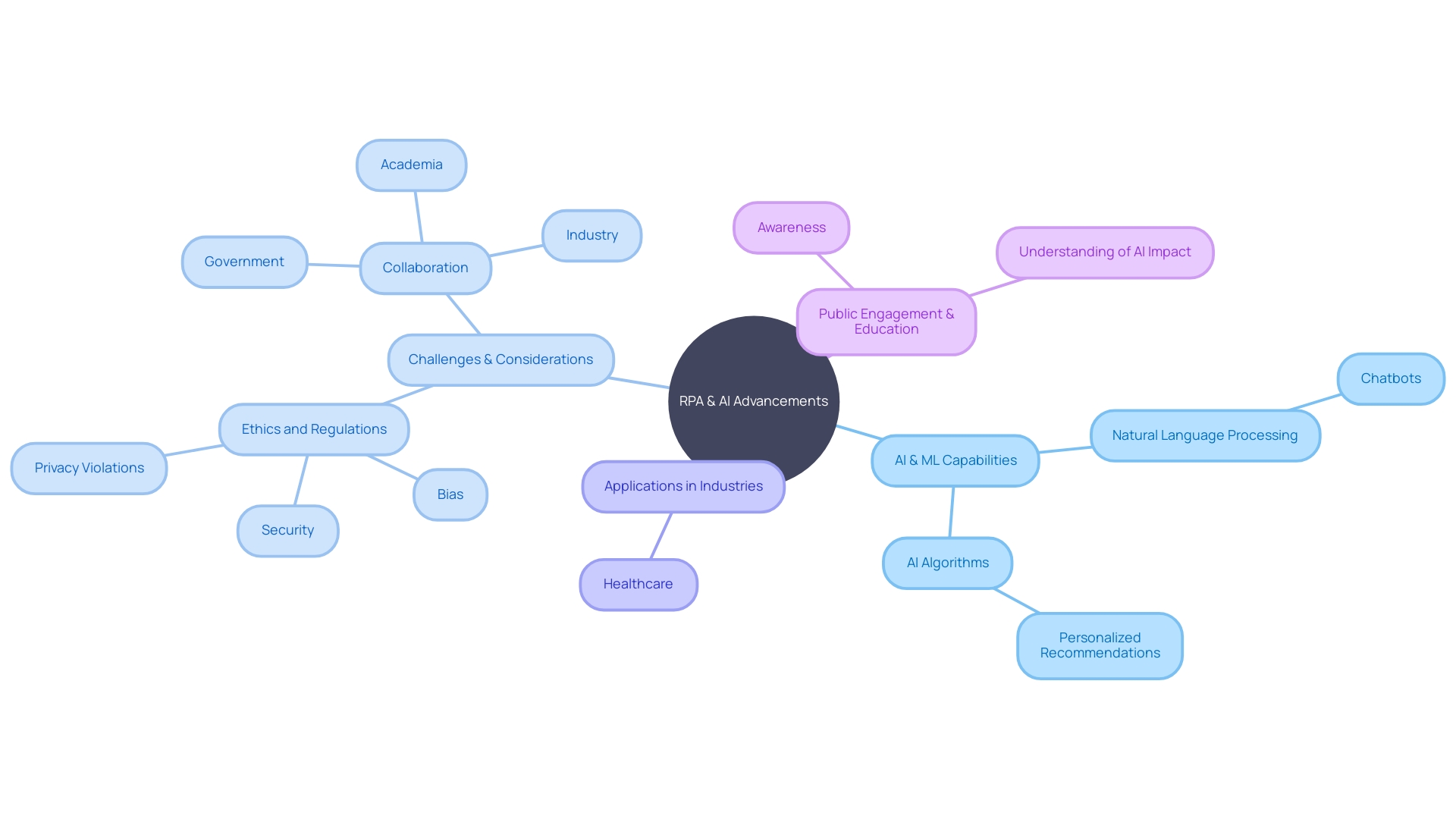
Conclusion
In conclusion, successful implementation of Robotic Process Automation (RPA) requires choosing the right tool, understanding its fundamentals, and exploring advanced techniques. Professionals should also stay updated with certifications and training programs to stay ahead in this rapidly evolving field.
Choosing the right RPA tool involves assessing usability, scalability, and integration capabilities. Understanding RPA fundamentals and its ability to connect systems is crucial for streamlining processes and improving efficiency.
To excel in RPA development, professionals must grasp programming languages and essential constructs. Staying updated with certifications and training programs is vital.
Exploring advanced RPA techniques, such as image and text recognition, enables the creation of sophisticated automation solutions. Human oversight and continuous monitoring are essential for stability and efficiency.
Successful implementation strategies involve identifying automation opportunities, crafting compelling business cases, and securing stakeholder endorsement. Rigorous testing and strategic deployment ensure accurate and efficient automation.
Staying updated with certifications and training programs is crucial for professionals. Adopting coding standards, emphasizing modular design, and integrating error handling enhance the quality of RPA solutions.
The integration of AI and machine learning amplifies RPA’s capabilities, enabling chatbots with natural language processing and personalized recommendations. Ethical considerations and human oversight remain important.
In conclusion, by choosing the right tool, understanding fundamentals, exploring advanced techniques, and staying updated with certifications, professionals can harness the power of RPA for operational excellence and efficiency. The synergy between human ingenuity and digital precision propels businesses toward the future of RPA and transformative technological innovation.
Become an expert in RPA development today!

